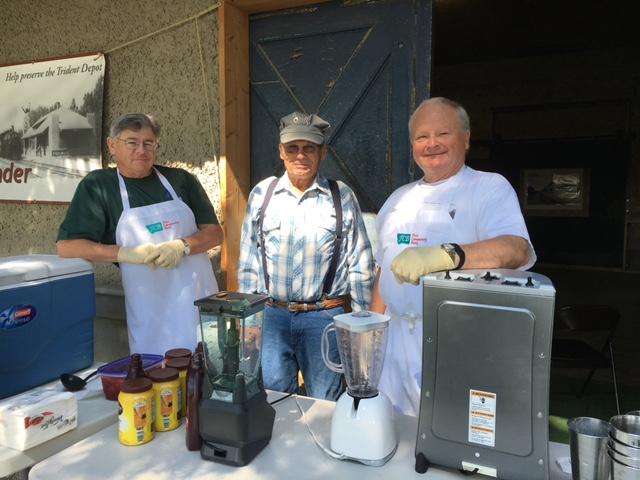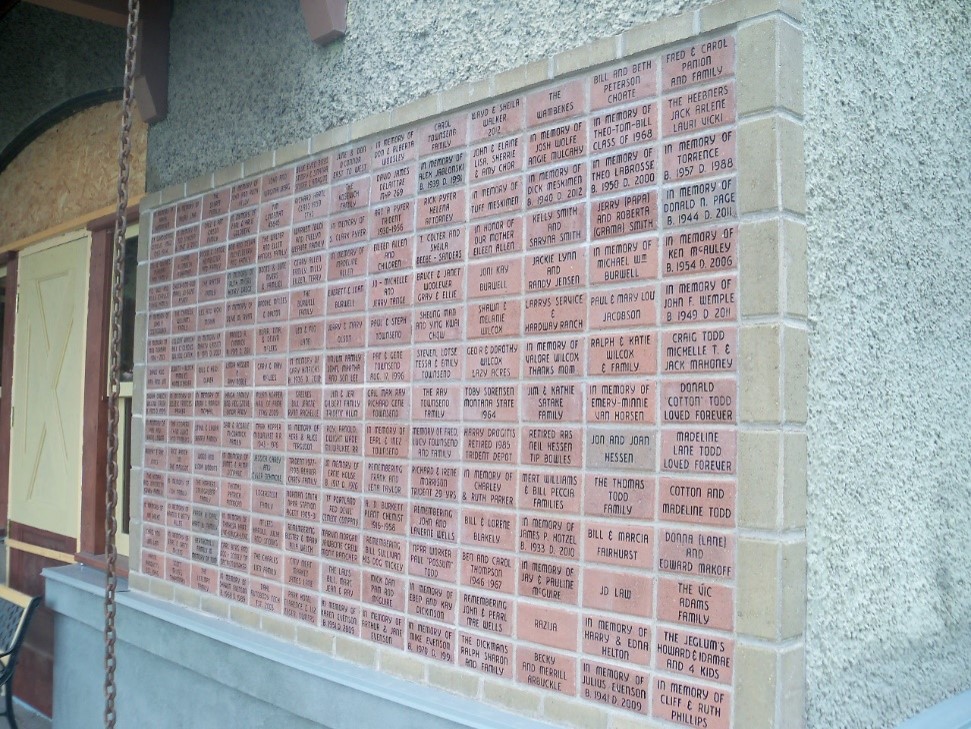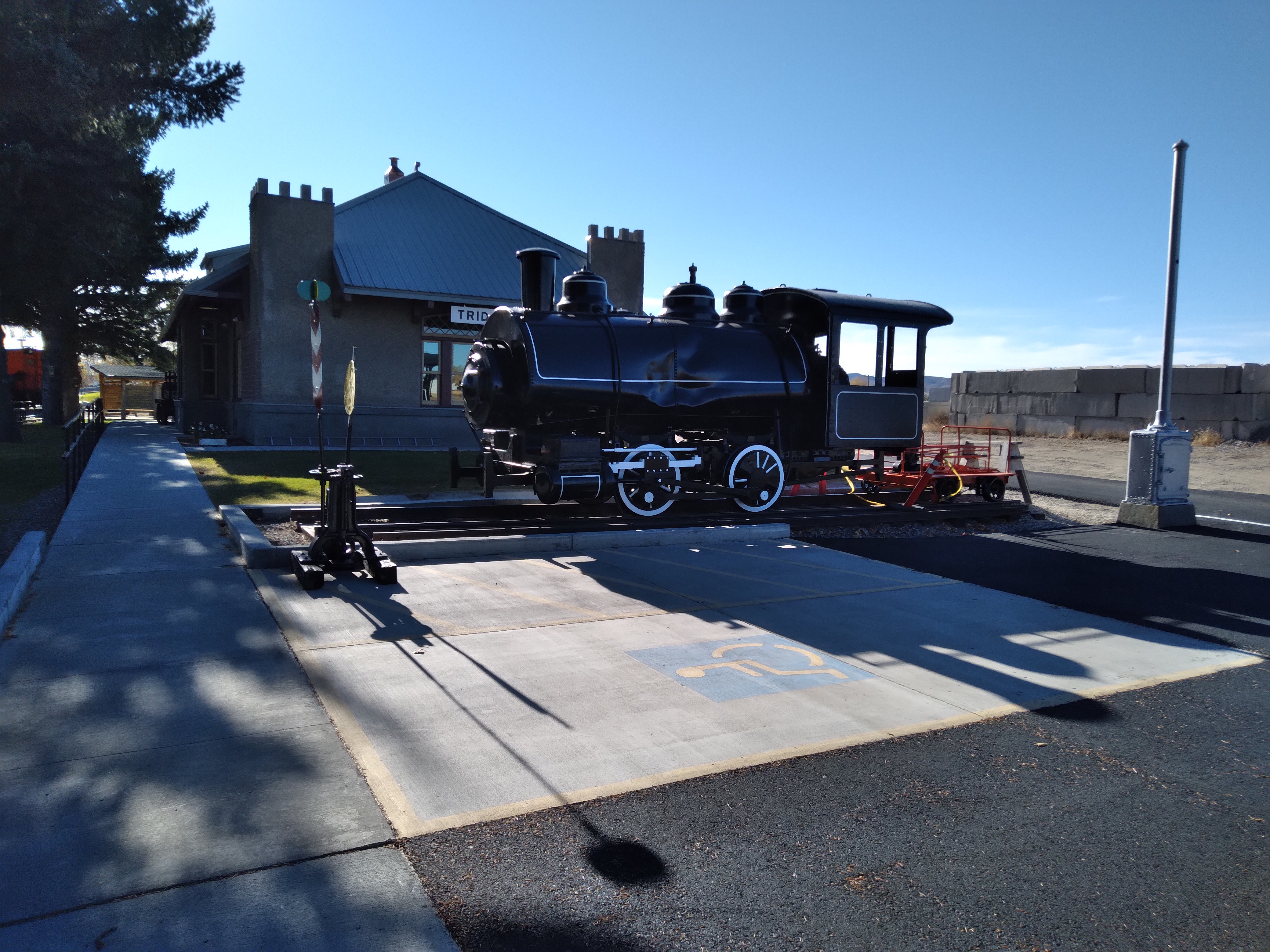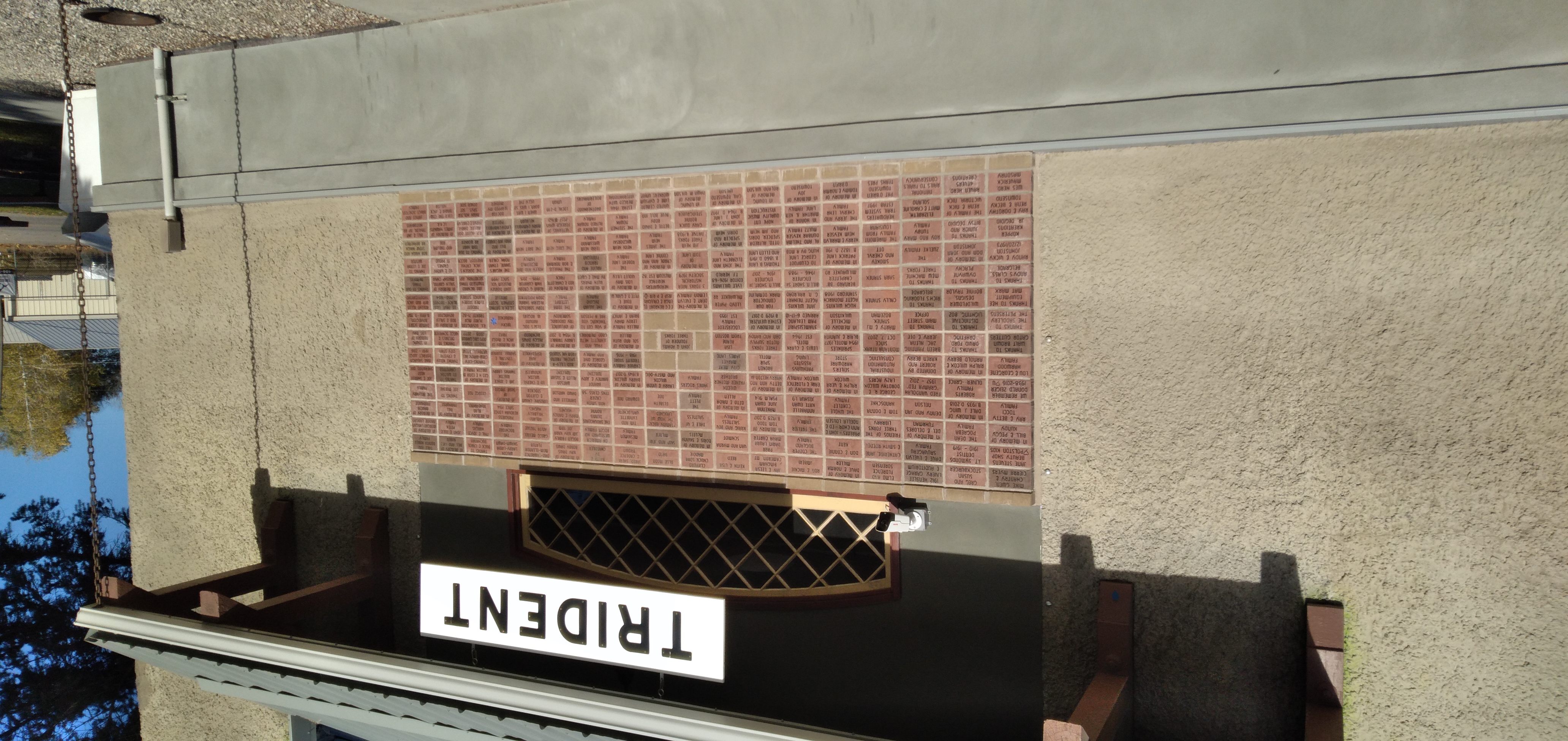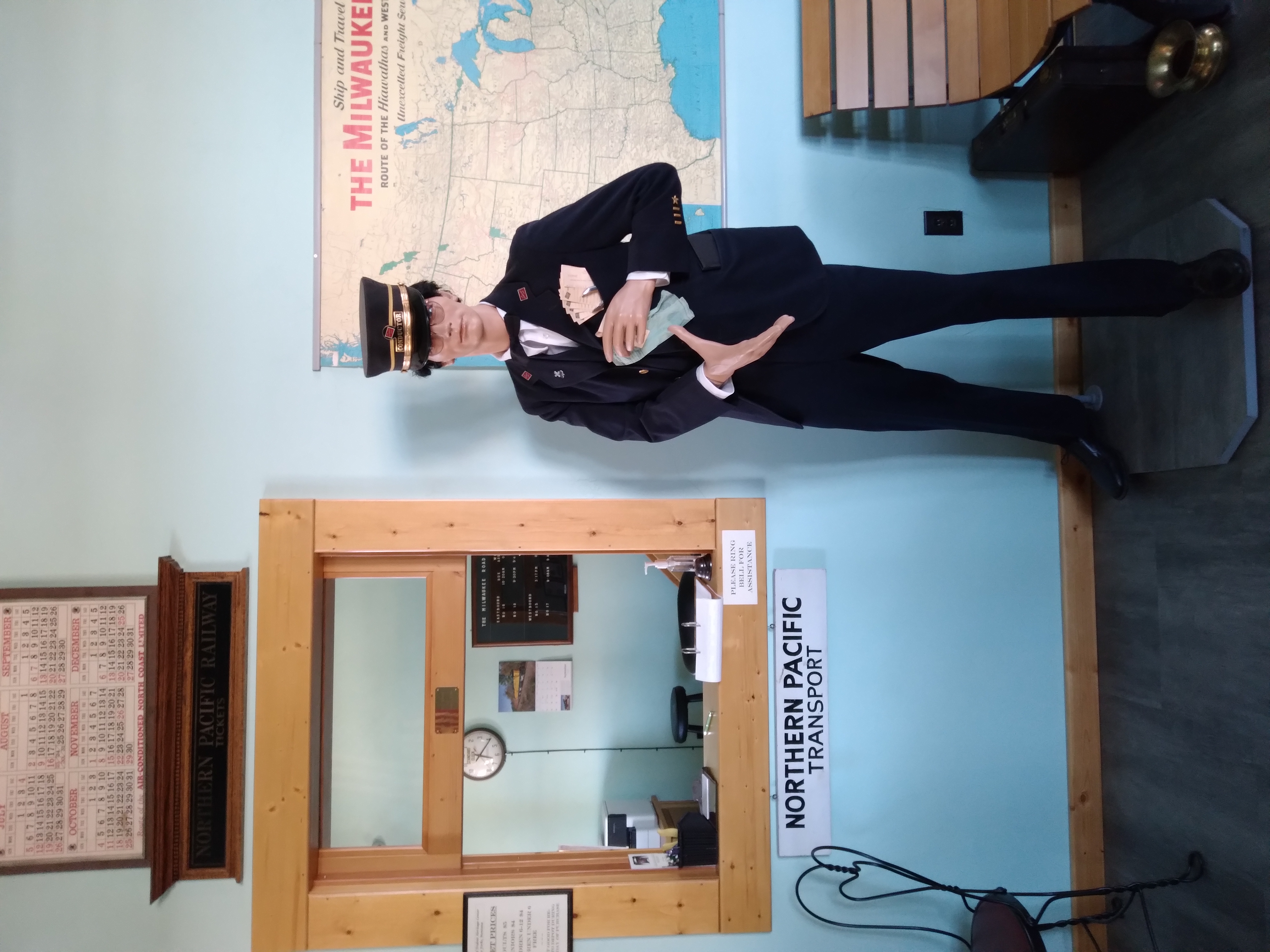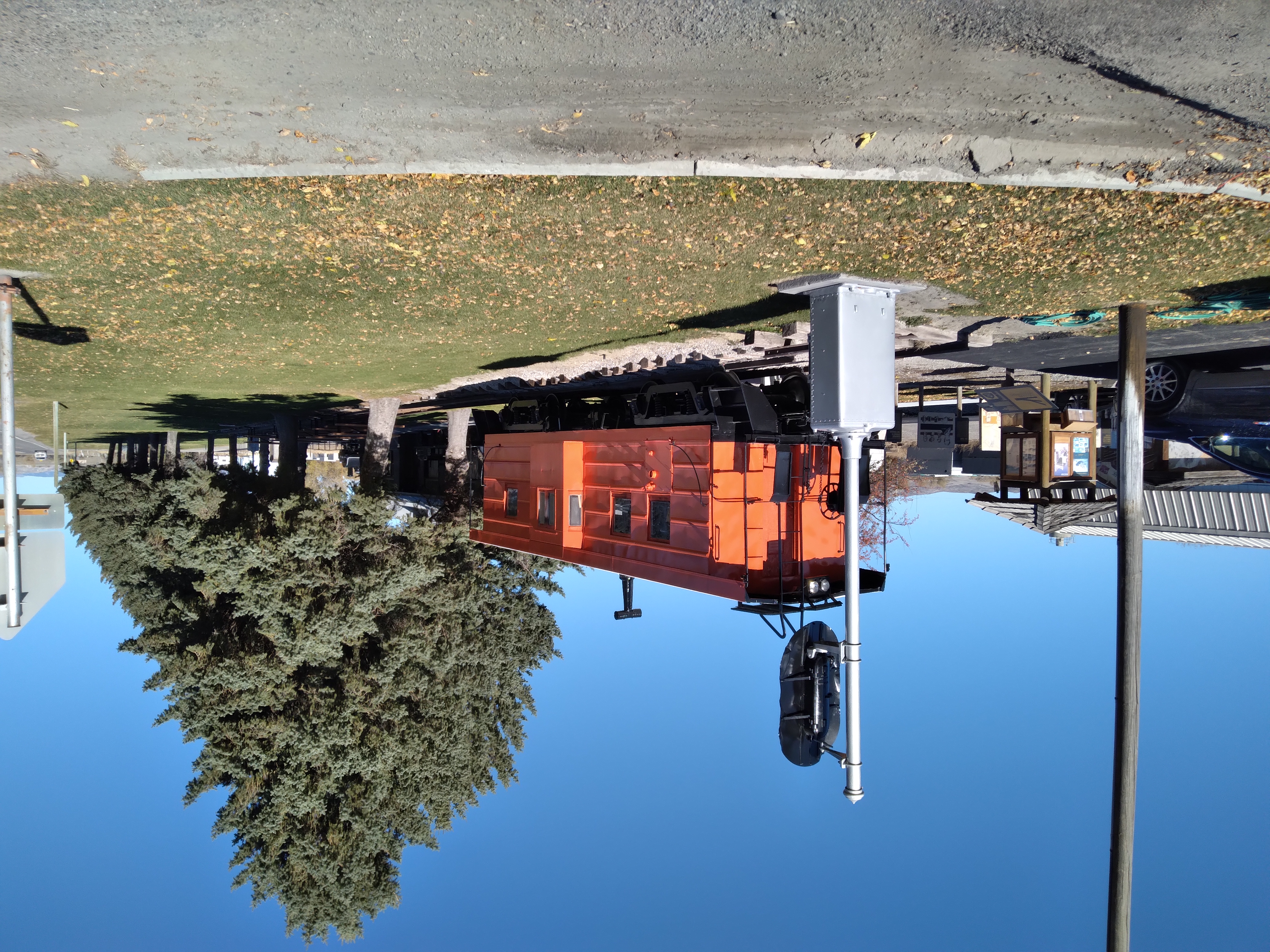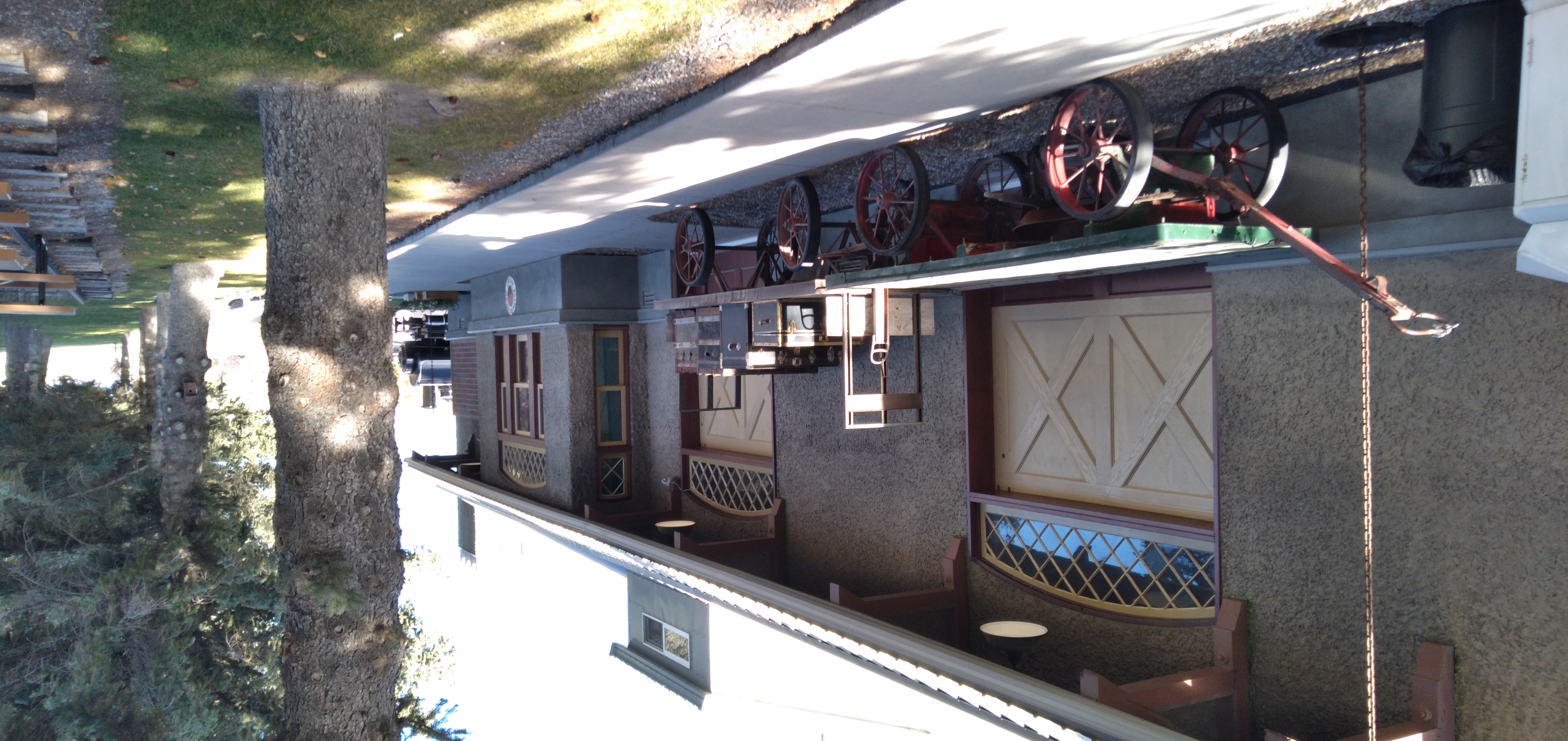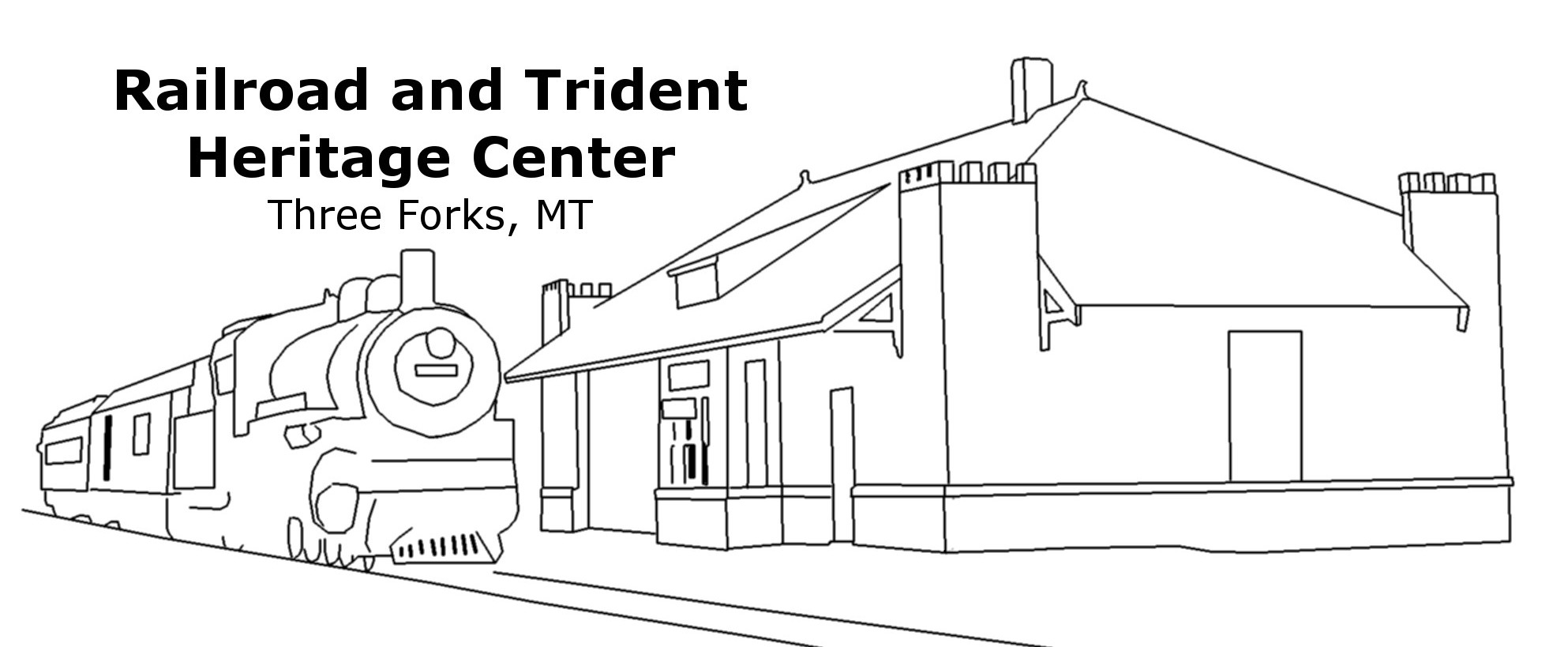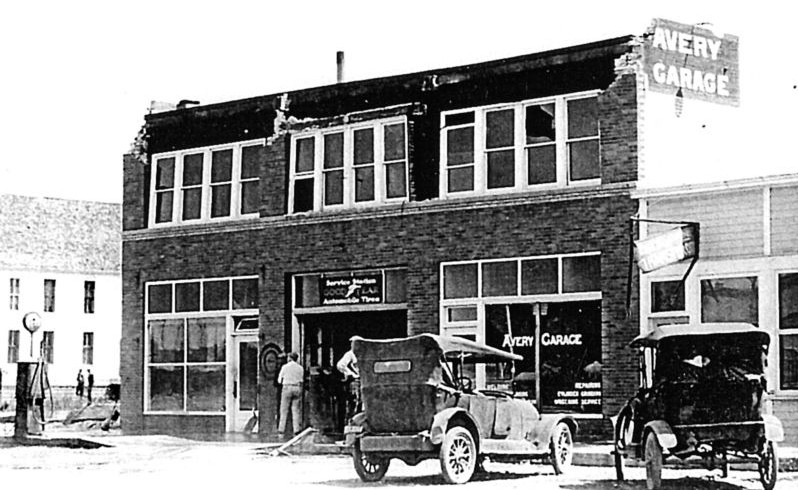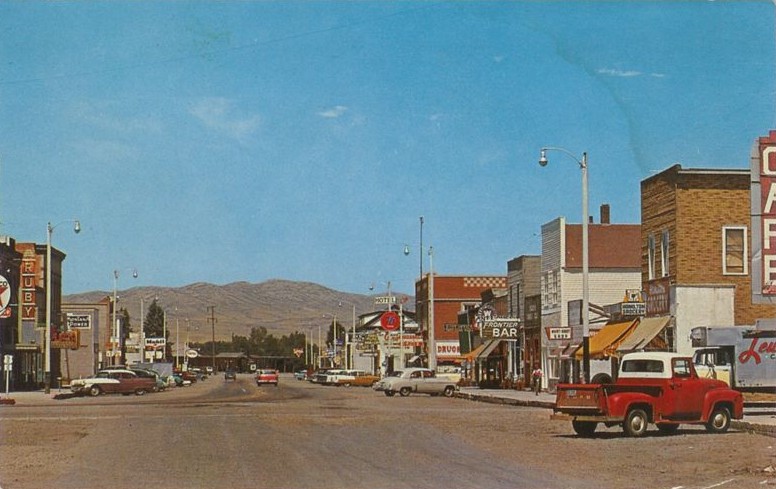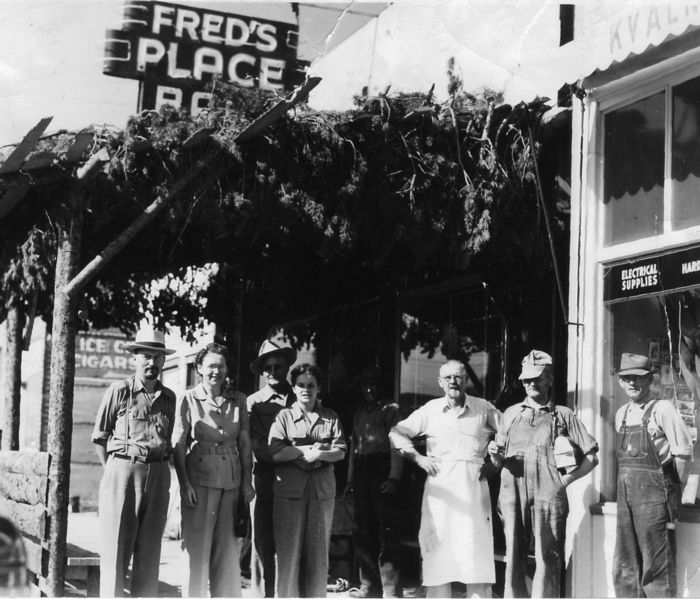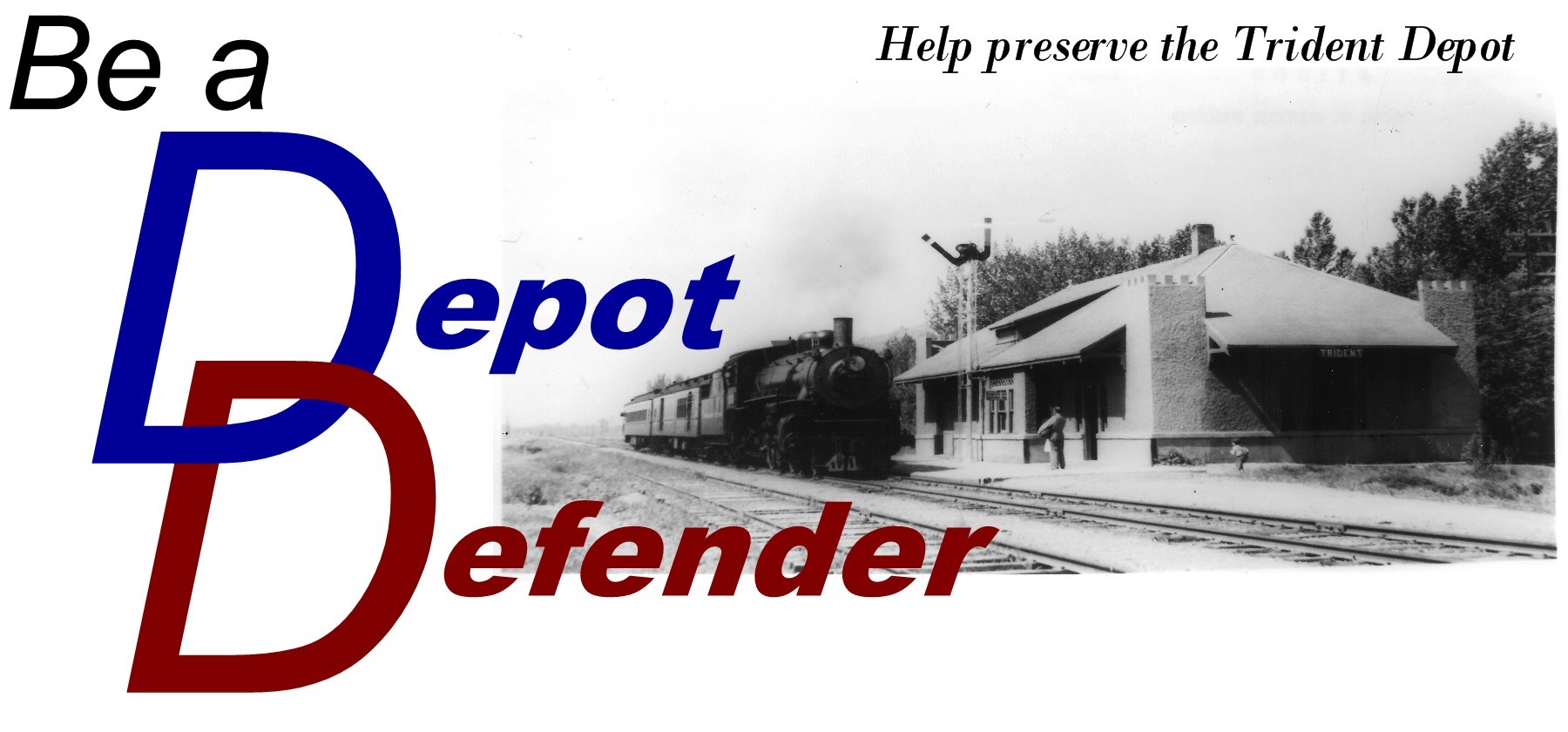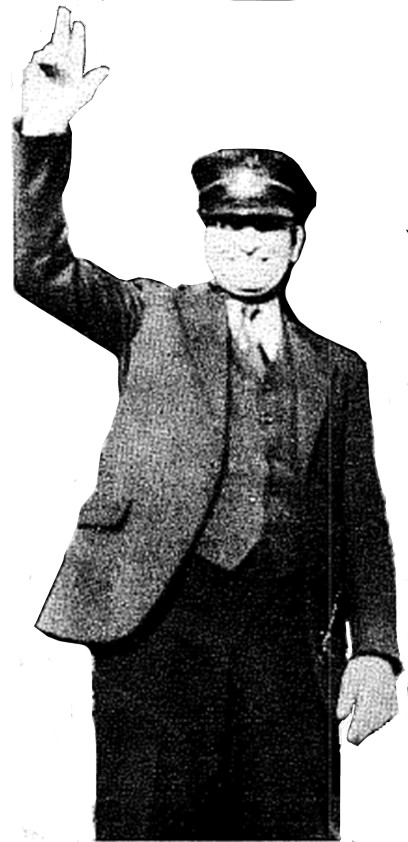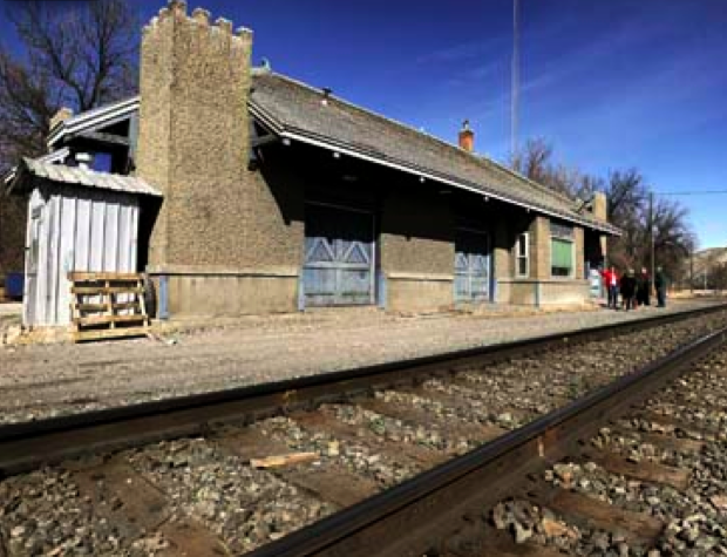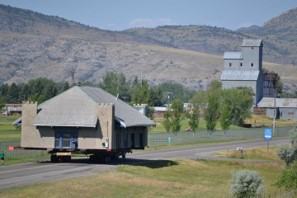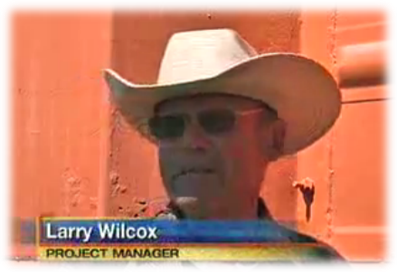In 2011, the Society membership voted to begin the Depot Defender Project to move and repurpose the Northern Pacific
Railroad Trident Depot into Three Forks to house the Railroad and Trident Heritage Center, a new museum for the Missouri
River headwaters area. As reported by several local papers (see links below), the Trident depot was moved to the since
renamed John Q. Adams Milwaukee Railroad Park on July 27, 2011, and the footings were poured on August 22, 2011. Maverick
Masonry was selected to build the brick foundation under the building, and in March 2012 the depot was eased down to its
new permanent home.
In 1907, the limestone hills near the headwaters of the Missouri River were surveyed with an eye toward bringing a
cement manufacturing plant to the area. Once the plant was producing product, a depot was needed to manage
the railcars delivering bagged cement to customers. The general history of the Trident area can be found here.
The design of the Trident depot was unique in the Northern Pacific system. The larger stations in the system were
constructed with brick façades, and the smaller depots were wooden structures. While the Trident depot was based on a
standard NP depot plan, what sets it apart are the exterior embellishments. The architect added the exterior corner
towers topped with crenellations, giving the building a touch of the medieval. At the original site, the depot was
built on a concrete slab with a three-foot wall as the base. The upper portion of the building was constructed of wood.
A metal mesh was wrapped around the building and a concrete slurry using large aggregate was sprayed on the exterior,
giving the Trident depot a solid, institutional feel without the high cost of shipping in bricks (there were no roads
into Trident for about a decade). Construction of the depot was completed in June 1911.
In addition to handling mail, passengers, and freight, the depot was a refuge of sorts in times of trouble. When the
Trident village was flooded because of an ice jam, villagers were hustled to the depot and stayed there until the waters
receded. When a shooting took place in the plant, the victim was hauled to the depot, treated and sent off to Helena for
surgery. During its active days, there were only a few Depot Agents, the first three being Norman A. Smith, Richard Burner
and Lloyd Hayes. O.T. Ness was the last Depot Agent in the late 1960s. During WW I, Mr. Smith trained several female
telegraph operators, including his wife, Anna.
In 1970, the Northern Pacific Railway Company was merged with other companies to form the Burlington Northern Railroad, and
eventually the 900 miles of former NP mainline in Montana was brought under the operation and control of Montana Rail Link.
In that time-frame, the depot was converted to a section house, the headquarters for rail maintenance crews. The southern
wall of the depot was replaced by a garage door to allow the line truck to be stored indoors.
Eventually, Montana Rail Link discontinued use of the building and considered it for demolition to provide some
property-tax relief in 2010, but later relented and offered the building free of charge to anyone willing to move it off
the property. The Bozeman Daily Chronicle published an article in June 2010 regarding the imminent demolition, and
contacted the Historical Society for comments. The Society contacted Montana Rail Link about the depot asking for a delay
in the demolition. In an emergency meeting of the Society in December 2010, the members and board agreed to undertake
moving the depot. In January 2011, the Society kicked off the “Depot Defender” project, raising money to move the building
to Three Forks and renovate it for the purpose of creating a second museum, the Railroad and Trident Heritage Center (RTHC).
Larry Wilcox, a retired rancher, businessman, Society member and avid railroad modeler, volunteered to be the project manager.
Being in a time-crunch to get the building off of MRL property, long term plans were developed on the fly. Sites for the building
were reviewed and eventually the City of Three Forks offered placement in Milwaukee Park.
In preparation for the move, non-original walls, fixtures, and plaster were removed. The lower three feet of the depot
was concrete, so the wood and stucco upper portion was raised and put on i-beams and a moving rig. Unfortunately, fourteen
tons of the interior insulation had to be removed and the i-beams made the interior work difficult for Larry, Mike Lane
and Gene Townsend. The mover, Pro Hand Services, Inc., of Belgrade, offered a considerable discount for moving the depot
and in early July 2011, sufficient funds had been raised to pay for the transport into Three Forks.
The seventy-five by twenty-five-foot building was moved on July 28, 2011, about eight miles without incident and little to
no damage, with the final destination a hole in the ground in Milwaukee Park. The building was set 96” in the air on
wood blocks to allow the footing and foundation to be built under it, which took about nine months. The building was
lowered onto the new foundation in March 2012. A sub-floor was built that year and the Historical Society opened the
depot to visitors and the curious later that year. In 2012, the City and the Society came to an agreement for the lease
of the property.
The RTHC is dedicated to the preservation of the local and regional railroad culture and the preservation of the
culture of the once thriving company town of Trident, Montana.
News Coverage of the move:
Belgrade News's March 2011 article
Photos of the move on Facebook
As reported in the Bozeman Daily Chronicle
